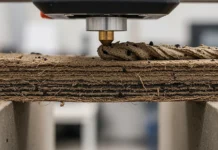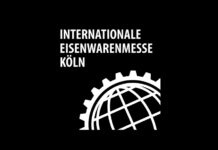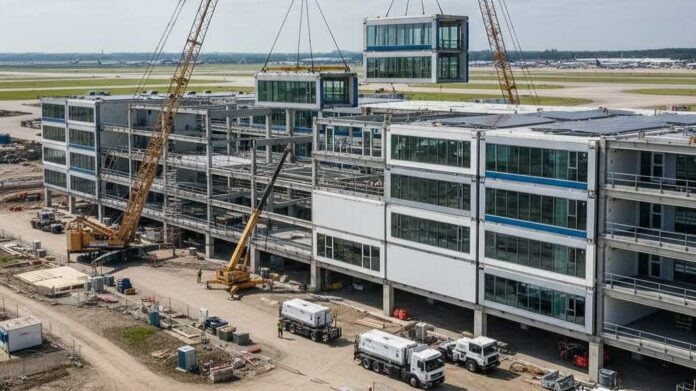Modular and Precast Solutions Driving Efficiency in Terminal Projects
The construction industry’s adoption of modular and precast construction in terminal projects represents a fundamental shift toward more efficient, sustainable, and quality-controlled building methodologies that address the unique challenges of complex transportation infrastructure development. As terminal construction projects face increasing pressure to reduce timelines, minimize operational disruptions, and improve quality outcomes, offsite construction methods have emerged as transformative solutions that deliver superior results while managing traditional construction risks.
Modern terminal projects benefit significantly from modular construction techniques that enable concurrent design and fabrication activities, dramatically reducing overall project timelines while improving quality control through factory-based production environments. The integration of precast concrete solutions, prefabricated structural systems, and modular building components creates opportunities for enhanced construction efficiency that traditional stick-built approaches cannot match.
The strategic advantages of modular and precast solutions extend beyond mere schedule compression to encompass improved quality assurance, reduced environmental impact, enhanced worker safety, and greater cost predictability that make these approaches increasingly attractive for terminal development projects worldwide. The scalability and adaptability of modular systems particularly suit the phased development requirements common in terminal expansion projects.
Understanding Modular Construction Methodologies
Modular construction encompasses various approaches that share the common principle of factory-based fabrication combined with on-site assembly, creating opportunities for improved quality control, reduced waste, and accelerated project delivery. The application of modular construction in terminal projects requires careful consideration of architectural requirements, operational constraints, and assembly logistics that differ significantly from traditional building applications.
Volumetric modular construction creates complete three-dimensional building sections that are fabricated off-site and assembled into larger structures at project sites. This approach proves particularly effective for terminal applications requiring repetitive spaces such as gate lounges, retail areas, or office facilities where standardized modules can be efficiently produced and rapidly assembled.
Panelized construction systems offer greater architectural flexibility while maintaining many of the efficiency advantages of modular approaches. These systems enable complex architectural forms while providing controlled fabrication environments that improve quality and reduce construction timelines compared to traditional construction methodologies.
Design Integration and Standardization
Successful modular construction in terminal projects requires early integration of modular design principles into architectural and engineering planning processes. Design standardization enables efficient module production while maintaining the architectural flexibility necessary to meet complex terminal operational requirements and aesthetic objectives.
The coordination between architects, engineers, and fabricators becomes critical in modular construction, where design decisions directly impact fabrication feasibility, transportation logistics, and assembly procedures. This collaboration must begin early in design phases to ensure that modular solutions can be effectively implemented throughout project development.
Precast Concrete Applications and Advantages
Precast concrete solutions provide exceptional opportunities for improving construction efficiency in terminal projects, where large spans, complex geometries, and high-performance requirements create ideal applications for factory-produced concrete elements. The controlled production environment enables superior quality control while reducing on-site construction time and complexity.
Structural precast applications in terminal construction include columns, beams, floor systems, and facade elements that can be produced concurrently with site preparation activities, significantly reducing critical path construction time. The precision achievable in factory production environments enables tight construction tolerances that improve overall building performance and reduce field assembly challenges.
Architectural precast elements provide opportunities for complex facade systems, decorative features, and specialized building components that would be difficult or expensive to achieve with cast-in-place construction methods. These elements can integrate multiple functions including structural support, weatherproofing, and aesthetic features in single components that simplify construction while improving performance.
Quality Control and Performance Benefits
Factory production environments enable comprehensive quality control procedures that are difficult to achieve in field construction conditions. Controlled curing conditions, precise material proportioning, and consistent fabrication procedures result in superior concrete strength and durability compared to many field-cast alternatives.
The ability to conduct thorough testing and inspection of precast elements before installation eliminates many quality risks associated with in-place construction while enabling corrective action before elements are incorporated into structures. This quality assurance capability particularly benefits terminal projects where long-term durability and low maintenance requirements are essential.
Offsite Fabrication and Supply Chain Optimization
The integration of offsite fabrication processes requires sophisticated supply chain coordination that balances production efficiency with delivery logistics and on-site assembly requirements. Successful offsite construction depends on reliable supply chains that can deliver components according to construction schedules while maintaining quality standards throughout production and transportation phases.
Production planning for modular and precast elements must coordinate with overall construction schedules while accounting for fabrication lead times, transportation logistics, and site readiness requirements. This coordination requires advanced planning and communication systems that integrate fabrication activities with overall project management processes.
Quality assurance in offsite fabrication includes material certification, production monitoring, and finished component inspection that ensures compliance with specifications before delivery to construction sites. These quality control processes prevent field installation of defective components while maintaining production efficiency and schedule compliance.
Transportation and Logistics Management
Transportation logistics for modular and precast components requires specialized equipment and routing coordination that accounts for component dimensions, weights, and delivery timing requirements. Transportation planning must consider infrastructure limitations including bridge capacities, road restrictions, and site access constraints that could affect delivery feasibility.
Component sizing and design must balance fabrication efficiency with transportation limitations, ensuring that elements can be efficiently produced and delivered while meeting architectural and structural performance requirements. This balance often requires creative design solutions that maximize component size while respecting transportation constraints.
Assembly and Installation Procedures
On-site assembly of modular and precast components requires specialized equipment, skilled installation crews, and precise coordination procedures that ensure accurate placement and connection of prefabricated elements. Installation planning must address site access, equipment positioning, and assembly sequencing that enables efficient construction while maintaining safety and quality standards.
Temporary support systems and bracing requirements during assembly must be carefully planned and executed to ensure structural stability throughout construction phases. These systems require engineering analysis and installation procedures that account for construction loading conditions and assembly sequences.
Connection systems for modular and precast elements must provide reliable structural performance while enabling efficient field assembly procedures. Connection design often represents a critical interface between factory production and field installation that requires careful coordination between fabrication and construction teams.
Quality Control During Assembly
Field quality control during assembly includes dimensional verification, connection inspection, and system testing that ensures proper integration of prefabricated components into completed structures. These procedures require trained inspection personnel and appropriate testing equipment to verify compliance with design specifications.
Documentation of assembly procedures and inspection results provides critical records for project compliance and long-term facility management. This documentation supports warranty claims, maintenance planning, and future modification activities that may affect modular or precast building systems.
Technology Integration and Digital Coordination
Building Information Modeling technology enables precise coordination between design, fabrication, and assembly activities that is essential for successful modular and precast construction. BIM integration provides visualization capabilities, clash detection, and dimensional coordination that prevent costly field conflicts while optimizing production and assembly efficiency.
Digital fabrication systems enable automated production of modular and precast components based on BIM data, improving accuracy while reducing production time and costs. These systems integrate design data with production equipment to ensure that fabricated components match design specifications precisely.
Real-time project management systems coordinate fabrication schedules with site preparation and assembly activities, enabling dynamic schedule optimization that responds to changing conditions while maintaining overall project timelines. These systems provide visibility into production progress and delivery schedules that support informed decision-making throughout construction phases.
Automated Systems and Robotics
Robotic fabrication systems increasingly support modular and precast production, providing improved precision and consistency while reducing labor requirements for repetitive production activities. These systems enable 24-hour production capabilities while maintaining consistent quality standards throughout production runs.
Automated material handling and positioning systems improve production efficiency while reducing worker exposure to heavy lifting and repetitive motion hazards. These systems require initial capital investment but provide long-term benefits through improved productivity and reduced injury risks.
Economic Benefits and Cost Analysis
The economic advantages of modular and precast construction in terminal projects include reduced construction timelines, improved quality outcomes, and decreased construction risk that collectively provide superior value compared to traditional construction approaches. Cost analysis must consider both direct construction costs and indirect benefits including schedule compression and quality improvements.
Labor productivity benefits result from factory production environments that enable efficient work processes, reduced weather delays, and optimal working conditions that improve output while reducing labor costs. Skilled labor requirements shift from field activities to factory production where more controlled environments enable higher productivity rates.
Material waste reduction in factory production environments contributes to cost savings while supporting sustainability objectives through improved resource utilization. Controlled production processes enable precise material usage and recycling of production waste that reduces overall material costs and environmental impact.
Return on Investment Considerations
Long-term cost benefits of modular and precast construction include reduced maintenance requirements, improved building performance, and enhanced durability that provide lifecycle value beyond initial construction cost savings. These benefits require evaluation over extended periods to fully appreciate the value proposition of advanced construction methodologies.
Market competitiveness benefits from improved construction capabilities enable organizations to pursue larger and more complex projects while delivering superior outcomes that build reputation and support business growth. These strategic advantages contribute to long-term business success beyond individual project benefits.
Sustainability and Environmental Benefits
Environmental benefits of modular and precast construction include reduced construction waste, improved material efficiency, and decreased site disturbance that support broader sustainability objectives while meeting environmental performance requirements. Factory production enables material optimization and waste reduction strategies that are difficult to achieve in field construction environments.
Energy efficiency benefits result from improved building envelope performance and system integration that is facilitated by factory production quality control. These improvements contribute to reduced operational energy consumption and improved environmental performance throughout building lifecycles.
Transportation efficiency optimization reduces fuel consumption and emissions associated with material delivery and construction logistics. Consolidated deliveries and optimized routing contribute to reduced environmental impact while supporting cost reduction objectives.
Lifecycle Sustainability Assessment
Comprehensive lifecycle assessment of modular and precast construction considers environmental impacts from material production through end-of-life disposal or recycling. These assessments support informed decision-making about construction approaches while demonstrating environmental stewardship to stakeholders and regulatory agencies.
Circular economy principles can be integrated into modular construction approaches through design for disassembly and component reuse that extends material lifecycles and reduces waste generation. These approaches support long-term sustainability objectives while providing economic benefits through material recovery and reuse opportunities.
Future Trends and Innovation Opportunities
Emerging technologies continue to expand the capabilities and applications of modular and precast construction through advanced materials, automated production systems, and integrated digital platforms that enhance efficiency and quality outcomes. These innovations promise continued improvement in construction methodologies that support more efficient terminal development.
Advanced materials including high-performance concrete, composite materials, and smart building systems enable new applications for precast and modular construction while improving performance characteristics. These materials require evaluation of production implications and field installation requirements to ensure successful implementation.
Digital integration technologies including artificial intelligence, automated design optimization, and predictive analytics support improved decision-making throughout design, fabrication, and assembly phases. These technologies enable more sophisticated construction approaches while reducing risk and improving outcomes for complex terminal projects.
Integration with Smart Building Technologies
Smart building system integration with modular and precast construction enables advanced building performance monitoring and control that optimizes operational efficiency while supporting maintenance and lifecycle management activities. These systems require planning for integration during design and fabrication phases to ensure effective implementation.
The future of terminal construction increasingly depends on advanced construction methodologies that balance efficiency, quality, and sustainability requirements while addressing the unique challenges of complex transportation infrastructure development. Modular and precast solutions provide proven approaches that deliver superior outcomes while positioning organizations for success in increasingly competitive and demanding construction markets. The continued evolution of these technologies promises even greater benefits as innovation continues to drive improvements in construction efficiency and quality outcomes.































